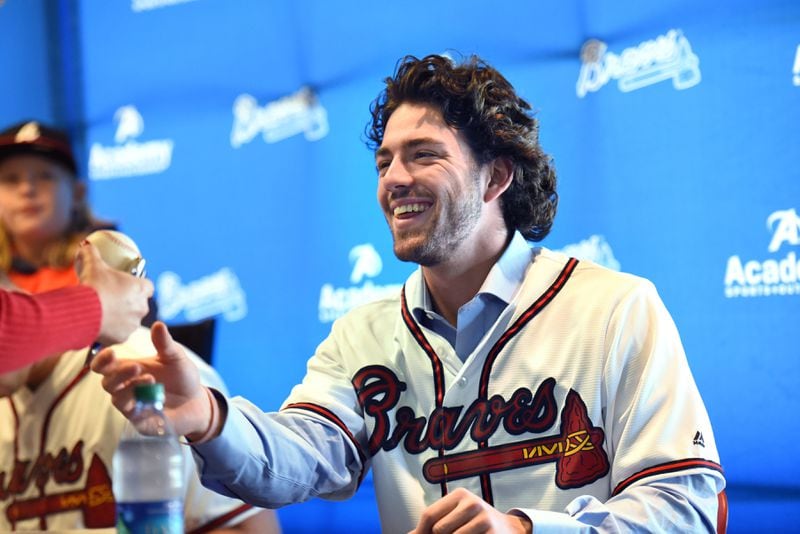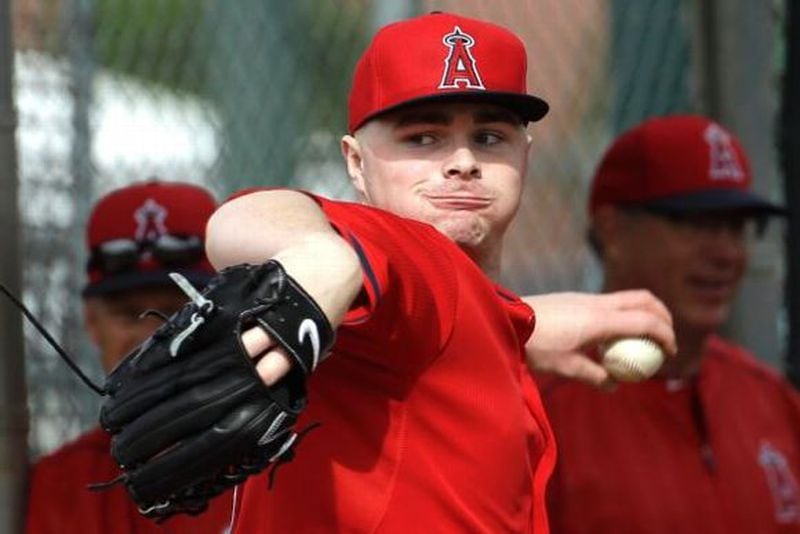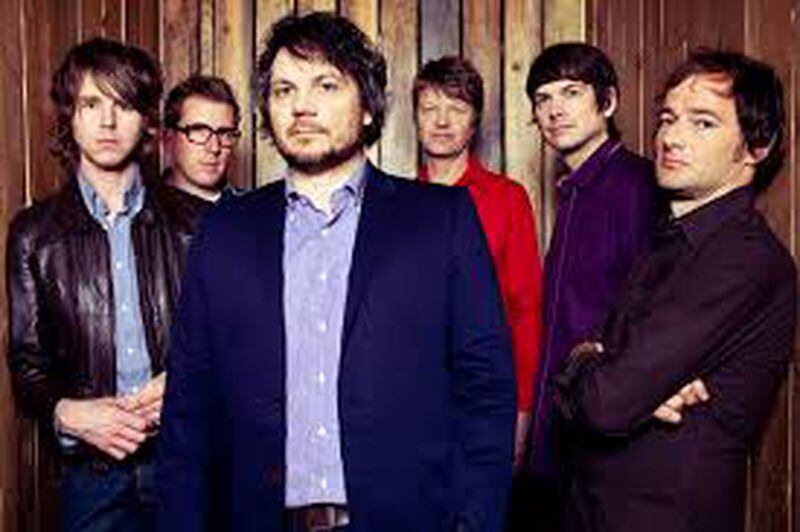It's been a rather breathtaking transformation, albeit one that came with major short-term costs and, yes, flat-out embarrassment during the second half of the Braves' 2015 season.
Still, the fact is this: The Braves have stockpiled more pitching prospects than any other organization in major league baseball, an inventory of arms that includes three of the six Atlanta prospects in Baseball Prospectus’ Top 101 for 2016: hard-throwing lefty Sean Newcomb (No. 32), righty Aaron Blair (No. 43) and lefty Kolby Allard (No. 82). They appear all set for many years to come as far as big-time arms are concerned.
Of course, you can’t win championships with pitching alone. Many fans and media members have sought to remind the Braves of that this offseason. But really, it wasn’t necessary, that reminder. Team officials do realize it. And they have a plan – one they’re determined to follow, whether or not some folks are patient enough to abide.
By the way, before we go further, it’s worth noting the six Braves prospects on that list all ranked among the first 82, which is double or triple the number of prospects the organization had that highly regarded in recent years. Even more impressive, four were in the first 43.
That’s four of the top 43 prospects in the 30-team major leagues. The non-pitching Braves on the list are shortstops Dansby Swanson (No. 27) and Ozzie Albies (No. 37), and third baseman Austin Riley (No. 79).
But getting back to the stable of promising young pitchers, which also includes several other big-time prospects now or previously ranked on similar lists – Max Fried, Lucas Sims, Tyrell Jenkins, Touki Toussaint, Ricardo Sanchez, Mauricio Cabrera – and a few who made big-league debuts in 2015 (Matt Wisler, Manny Banuelos, Williams Perez) or 2014 (Mike Foltynewicz).
We’re not even including guys like Ryan Weber, who impressed in a couple of his fill-in starts last season and might’ve been viewed as one of the Braves’ better pitching prospects if they had the level of talent in their organization now that they had in the past. Not anymore. They’ve taken things to a whole different level.
“We’ve had some bad luck when you think about (Mike) Minor, (Brandon) Beachy, (Kris) Medlen – I mean, all those young guys with great arms getting hurt,” Braves GM John Coppolella said. “That’s why you keep getting more and more arms.”
With a few exceptions, notably Lucas Sims, the Braves acquired all of their current top pitching prospects in the past 15 months via a dizzying series of trades or the draft.
Bringing in loads of young talent has been the No. 1 goal – No. 2 isn’t even close – of Coppolella and Braves president of baseball operations John Hart since they took over after GM Frank Wren was fired in the last month of the 2014 season. Getting young talent, trading away bad contracts, and building for a sustainable long-term future as a steady contender once again -- something akin, at least they hope, to what the Braves were in the ‘90s through 2005.
That’s been their focus, and it’s started with filling the pipeline with young pitching, as Coppy and Hart vowed never to be caught again in situations like the Braves founds themselves in 2014 and 2015. Remember? The Braves signing pitchers during spring training after injuries to the likes of Medlen and Beachy and no depth to replace them, or reaching down to the minors to find a starter, any starter with a pulse and a decent Triple-A ERA, to plug into the rotation after spring-training or midseason injuries?
Filling the starting rotation with free agents was never viewed as a viable long-term solution for the revamped Braves front office, especially not when the price for such pitching – even back-of-rotation starters -- continues to soar to staggering levels.
The Braves wanted to acquire prospects who projected as middle- or top-of-rotation starters, and get enough of them to assure they weren’t shorthanded even if they have another spate of injuries. Most wouldn’t help in the short-term in 2015, but they figured some might be ready to get their feet wet in the majors in 2016 and some could make an impact by 2017, the first year in their new ballpark.
“You’re seeing guys who are probably fourth or fifth starters getting $14 million, $15 million a year,” Coppolella said of the free-agent pitching market the Braves have avoided, instead picking up a few buy-low veterans coming off disappointing seasons. “You look at what the New York Mets have done, they’ve got a lot of homegrown pitchers, but some of those guys they got in trades. (Noah) Syndergaard, they got when they traded the reigning Cy Young Award winner away, and (Syndergaard) was two or three years away. They were in the same spot with him as we are with the guys we’ve got now. You’ve just got to hit on the right players. I think the more pitching you have – we’ve seen, whether it’s Tommy Hanson, Mike Minor, Kris Medlen, Brandon Beachy – guys that we thought would be here for a long time, that got hurt.
“We’re still waiting to see what winds up happening, but we need more pitching. Even with all the pitching that we’ve got, we still need more. That’s the plan, basically, is to build around pitching. It’s the way the Braves were built throughout the 1990s.”
Now they’ve filled the pipeline with young pitching, the Braves’ focus has turned some toward acquiring some young hitters. The Braves traded for a couple of major league hitters – veteran shortstop Erick Aybar, a stopgap for 2016, and center fielder Ender Inciarte – and an extremely promising prospect in shortstop Swanson, the No. 1 overall pick in last June’s draft, after getting third-base prospect Riley in last June’s draft that was otherwise pitching-intensive for the Braves.
In this year’s June draft, the Braves have the No. 3 overall pick, and seem likely to select a hitter.
“All things being equal, we went with four high school kids last year (with their first four picks),” Coppolella said. “I think we’d like to go with (a) college (player) and I think we’d like to get a bat, just because we’re so pitching-heavy. That being said, you go with the best player if there’s really good talent there.
“I’ve gone out and met with a handful of guys that are in that top-three mix for us, just to get to know them. Me and (scouting director) Brian Bridges have both gone and met with guys, starting meeting with them in late December and we had a few meetings in early January. I mean, look, it’s the highest pick we’ve had in 25 years. It’s a huge pick for us, and we’ve got to get it right.”
The Braves are also expected to acquire a couple of high-level hitting prospects in the upcoming international free-agent signing period, including the player considered the top overall prospect in that group, Venezuelan shortstop Kevin Maitan. But he and a couple of other top-shelf international free agents the Braves are expected to sign will only be 16 and likely at least 4-5 years away from the majors.
On the other hand, the player they select with the No. 3 pick in this year draft, if he’s a college hitter, might be ready to contribute within a year or two if he’s anything like Swanson, whom the Braves think could be ready to move into the lineup by 2017 (it remains to be seen whether Swanson will stay at shortstop or eventually shift to second base; he or Albies is likely to move to second base and the other will stay at shortstop).
The Braves, who expect significantly increased revenues and higher payrolls beginning in 2017, at least sniffed around and expressed interest in a couple of free-agent sluggers this winter, but it was clear from the outset that it would take special circumstances – such as the market collapsing, and/or the player agreeing to a shorter deal than he’d been asking. It didn’t happen in either situation.
“Really, the plan for us is to build with young, homegrown players,” Coppolella said, “and to try to avoid signing free agents unless they can really finish off your team. For us to go out and spend $200 million on a player, it’s probably not going to end well. I don’t think it ever has, and I can’t think of many nine-figure contracts that ended really well. So we’re going to try to grow with our own players. Look, if it’s the right player and it’s a special contract – we were in on Justin Upton, we were in on (Yoenis) Cespedes. It just didn’t work out for us, whether it was the rate or the years. That’s why we didn’t end up going that way.
“We want to make smart choices to where we can be good every year. We want to be a team where when you get to spring training each year, you feel like you have a shot at the World Series. I didn’t really feel that way since I’ve been here. I still really don’t feel that way. I feel we’ll be better, I feel we could, it’s possible. But the way the Braves felt under John Schuerholz in 1991 through 2005, that’s what we want to get back to. They went to five World Series in nine years. That’s what we want to get back to.”
Someone asked Coppolella at FanFest whether he was proud of having turned the Braves’ farm system from a bottom-five to a top-five system in a span of one year.
“It’s great if you have prospects,” he said. “If you look back at the Royals, they had the top-ranked farm system for two or three years straight. That’s why they’re so good now. If it doesn’t work out, you aren’t proud. We aren’t in this just to build the best farm system. We’re in this so we can win the World Series.”
The best way to do that in today’s game, a team like the Braves without a huge payroll needs to build from the ground up, then sprinkle in a free agent or three to fill the gaps when it’s ready to make a serious title run.
I asked former Braves center fielder Andruw Jones on Saturday what he thought about the organization’s rebuilding project.
“The Braves always had a great minor league system, they always managed to keep the prospects (in good supply) down there,” Andruw said. “Sometimes, it’s a business and things have to go different ways. But the run that they had so long, they stayed with the consistent guys for a long time. Now with the way baseball is, with the big contracts and other stuff, guys get a chance to move a lot, so it’s hard to keep a guy in one place for a long time. So I think that’s a difference now than back then.
“But I think they had to do it (rebuild). A couple of moves that they made didn’t work out they way they wanted to work out, so they had to make the decision to get rid of (players from those moves) and try to rebuild. Hopefully the new stadium they’re building, they can put a good team together to bring the fans back to the field and hopefully get a good run like they had in the 1990s and early ‘00s.”
• Let's close with this one from Wilco, which has shows Feb. 10-11 at Tabernacle in ATL. This is from their classic album Yankee Hotel Foxtrot.
"KAMERA" by Wilco
I need a camera to my eye
To my eye, reminding
Which lies I have been hiding
which echoes belong
I've counted out days
to see how far
I've driven in the dark
with echoes in my heart Phone my family, tell them I'm lost
on the sidewalk
and, no, it's not OK I smashed a camera
I wanna know why
To my eye deciding
which lies i have been hiding
Which echoes belong
I'm counting on
a heart I know by heart
to walk me through this war
Memories distort
Phone my family, tell them I'm lost
on the sidewalk
and, no, it's not OK
I've counted out
and no one knows how far
I've driven in the dark
with echoes in my heart
Phone my family, tell them I'm lost
Yeah, I'm lost
and, no, it's not OK








